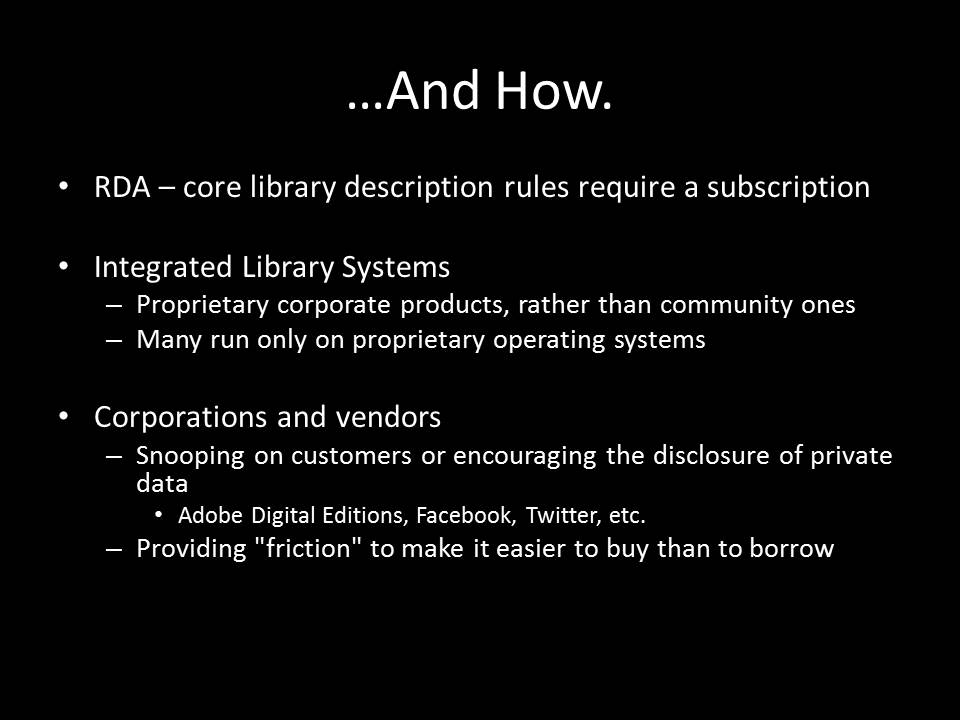Vendors Dislike Public Libraries

That failure extends in multiple directions, beyond one of the core functions of maintaining collections in public libraries ending up locked behind a paywall. Many of the ILS available run exclusively on proprietary operating systems like Windows, and are closed-source corporate products, as well. Users and libraries can request new features and hope that they're going to get them, but there's no way of unleashing a dedicated set of programmers on your ILS to get new functions into the source.
Furthermore, many of the products, services, and vendors that libraries contract with and that library users interact with on library computers engage in marketing to libraries and their customers, through advertisements, restrict the ability of library customers to use the product through non-optional DRM schemes, introduce "friction" or unnecessary steps in the process of borrowing a book from a library versus purchasing it from a vendor, or track their data and aggregate it into algorithms, sometimes overtly, often not. For example, a very popular program for reading lent library electronic books, Adobe Digital Editions (which contains an Adobe DRM scheme), started sending cleartext information about the reading habits of anyone that used the 4.0 release of the Adobe Digital Editions Software. The solution to the problem given to us by Adobe was not to openly cease with the spying, but Adobe reassured everyone that they were sending data that was encrypted instead of in the clear with the 4.01 release of Adobe Digital Editions. The underlying problem was not solved, only obfuscated.